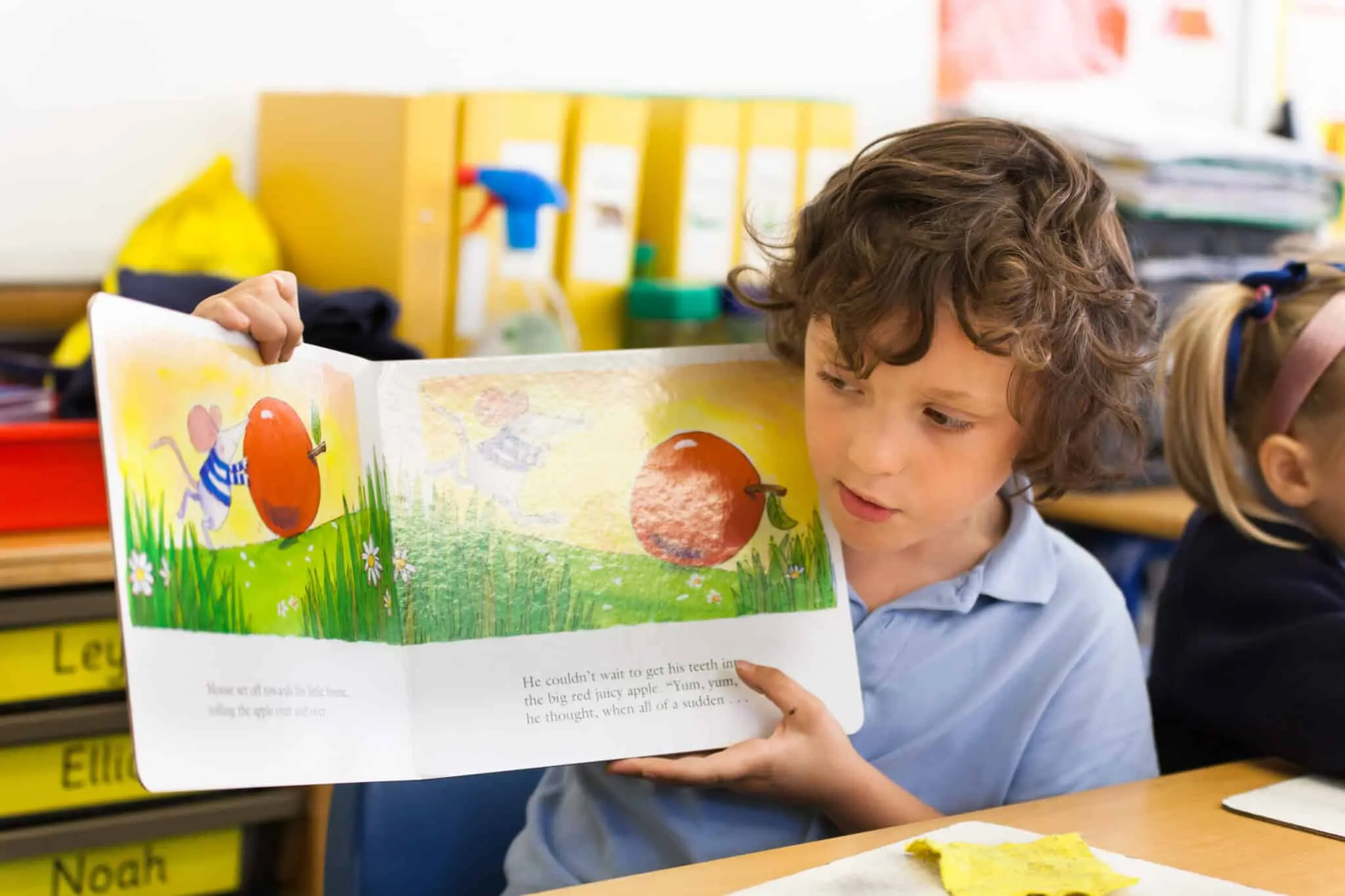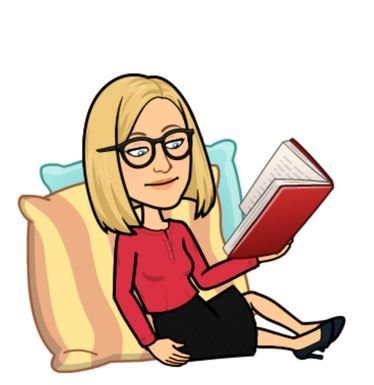March 10, 2021
Kelly Buxton, Reading Lead & Year 6 Teacher
There is so much negativity surrounding the return to classrooms this week, that we risk it becoming a self-fulfilling prophecy. Educators anxiously await the terrors resulting from children that have been sat around, their learning wasted and catch-up schemes touted as the only remedy. I would argue the opposite: children have shown great resilience and independence, they have turned up to class meetings day after day, submitting work to the best of their ability (given the disastrous situation they were plunged into overnight!). Their zealous nature and iron-clad exteriors could teach us, adults, a thing or two!
The key that unlocks their burgeoning potential is reading. Reading can be so much: the vessel to escape to a faraway land many moons away from any pandemic, a comforting blanket is woven with belonging and oozing warmth on a bleak, rainy, damp day, or a way to quench a thirst for knowledge that soothes an incessant itch.
Reading is a skill that is vital, crucial even, to positive life outcomes. It is the key that unlocks access to every aspect of the curriculum and beyond into the vast world that surrounds us. Reading breathes life. To quote Abi Elphinstone in her World Book Day video: “Read books as you would breathe air: to fill up and live.” At my junior school, reading is the beating heart of our curriculum, the reading strategy is constantly evolving. To assume that we will ever reach the pinnacle would be akin to me alone eradicating COVID: obviously well beyond my means! However, like expert scientists, educators will always strive for the perfect cure.
Lockdown and reading
When COVID-19 struck, forcing schools to close their doors to the majority and move to online learning, panic set in for those most vulnerable. Those already identified as struggling learners often have little resources or support at home. School is a haven for many, with routine, trusted adults, and social interactions in abundance. This sanctuary was whipped away overnight, plunging them, plus educators and parents, into the unknown abyss.
Reading is one of the hardest domains to assess – it is a multifaceted skill that is built over time through instruction and practice, relying heavily on weaved strands working together in synchrony. Children must not only be able to read the words but understand and take meaning from them.
Our spelling curriculum consisted of handing out spelling lists and testing the children at the end of the week: the dreaded look, cover, write a system which year after year demonstrated its ineffectiveness. A perpetual cycle is akin to those dreaded guided reading lessons! It was that clear, look, cover, write was not going to cut it. Sounds-Write methods (S-W), previously used successfully in our school as an ongoing intervention tool, was introduced into spelling lessons. I quickly realised that there were large gaps in understanding.
Introducing a systematic phonics programme to Year 6 children is not an easy task! Pupils looked at me like I had gone mad overnight, expecting them to sound out the words as we spelt and read them. Isn’t phonics just for KS1? That’s the stigma that sticks to phonics like a bad smell. But having completed the course and implemented the strategies, I’d encourage teachers of all experiences to explore this further and I’d even like to see it included as a fundamental in teacher training. Having utilised the S-W methods and eradicated the notion that phonics is just for KS1, children soon realised that they can spell and read any word they desire and start drawing links and building schemata. S-W can easily be tailored to upper KS2 through drawing on the morphology and etymology of the words. Nothing empowers children more than the feeling of confidently using large words. This is a skill for life, that I’d argue is used daily.
It was crucial that we maintained our momentum in embedding a reading for pleasure culture. However, it was clear that we were going to have to adapt. As reading lead of a junior school, my focus was clear. There were two key aspects to supporting the children’s reading journey: reading practice and storytime (every class, every day enjoyed the collective worship of 15 minutes of uninterrupted reading from a high-quality text). Most publishers provided permission for their books to be recorded and shared on private platforms, allowing all year groups to continue daily storytime. We encouraged children to enjoy and share stories with their families.
I initiated a community-based book donation project designed to get a book into the hands of every pupil from our school during lockdown. As a Renaissance school, utilising myON and Accelerated Reader (AR) during lockdown enabled children of all reading abilities to access stories. One notable feature of myON is the option to have the story read aloud, allowing children to work independently. This echoed one of our reading fluency strategies: modelled reading. Children were asked to record themselves reading from their chosen book from myON, complete the book, and take the AR quiz. This allowed us to hear every child in our class reading aloud, monitor their reading habits, and check their understanding (comprehension). Together we would reflect on the progress they were making and encourage them to read a variety of genres for varying purposes.
Year 6 had completed this activity on a weekly basis prior to lockdown. It’s still one of my favourite activities to mark – children’s personalities really shine through and parents often comment on how it has enhanced their child’s enjoyment and confidence in reading. In the modern world we live in, speaking to a computer screen has suddenly become a fundamental life skill. Exposing them to this in a fun and engaging way can only set them up to shine in a world saturated in competition.
Return to school
Putting reading at the heart of the return to the classroom is important to accelerate lost opportunities. Stories are gateways to knowledge and exploration – they build curiosity and foster reading for knowledge, pleasure and understanding. If we cannot visit the Amazon rainforest, we can explore it through reading. Katherine Rundell’s The Explorer, an immersive adventure story, captivates the imagination of young minds, as four children find themselves in a plane crash in the Amazon and must work together in a race for survival. Lending itself to supporting the teaching of South America (part of the geography curriculum), the book explains the physical lay of the land, tropical rainforests, and their ecosystems and provides a platform to share information about rivers and their flow patterns as they meander to the ocean. It could be used as a starting point to explore balanced arguments regarding deforestation and the tumultuous relationship between farmers and Indigenous tribes and its contribution to climate change.
Books are vessels to support PSHE and mental wellbeing, often filled with themes of survival, friendship, resilience, and perseverance. Reading is central to a curriculum with the varying strands being the gold thread that stitches it together. We are in unchartered waters regarding the state of children’s wellbeing due to lockdown. Stories that children can relate to, books they find hope and comfort in not only aid their academic progress but also their emotional and social education and often provide an outlet. Reading Well books are essential to any reading curriculum; they provide quality-assured information and advice to support children’s mental health and wellbeing. Heightened stress and anxiety brought on through these tough times prevent children from being in a state conducive to learning.
Recent newspaper headlines have introduced the idea that children are critically behind, building on negativity and adding pressure. Whilst I am open to all ideas that aid a child’s education, there are many ways to achieve our goals, and the children should always be at the centre. Reading is an ideal tool to use to ‘catch up’. Reading increases children’s vocabulary, helps them understand written text structure and writing for different audiences. By engaging children through interesting and in-depth texts, teachers get a 2-for-1 result from the lesson. Enhancing comprehension further reduces confusion in the classroom as children are better able to understand tasks assigned and can decipher work that they may have previously raised a hand for.
It is an ill-informed notion that children have been sat around twiddling their thumbs for the past few months. It is an offensive accusation that is lacking in an understanding of the education system and community within schools. Most children are now showing real maturity, tenacity, and strength. They’ve been working incredibly hard in some of the most challenging circumstances they will ever face. Teachers love teaching, they want their pupils to flourish and understand that working with children highlights just how amazing, resilient, and underestimated they are.
Children need, now more than ever support, encouragement, and guidance: not negativity and brow-bashing. We are in this situation but we’re in it together with the children and will support them where and as the need arises. I for one am extremely proud of the work shown by my pupils and look forward to getting back into a class-based learning environment.
Put reading at the heart of your curriculum and unlock the world around them.
About the author:
Kelly Buxton is a full-time teacher and a strong advocate of reading for pleasure. As a mum of two active boys, she’s always found herself researching best practices to help create a culture of reading for children, whilst exploring the wonderful realms of reading and sharing her ideas along the way.

